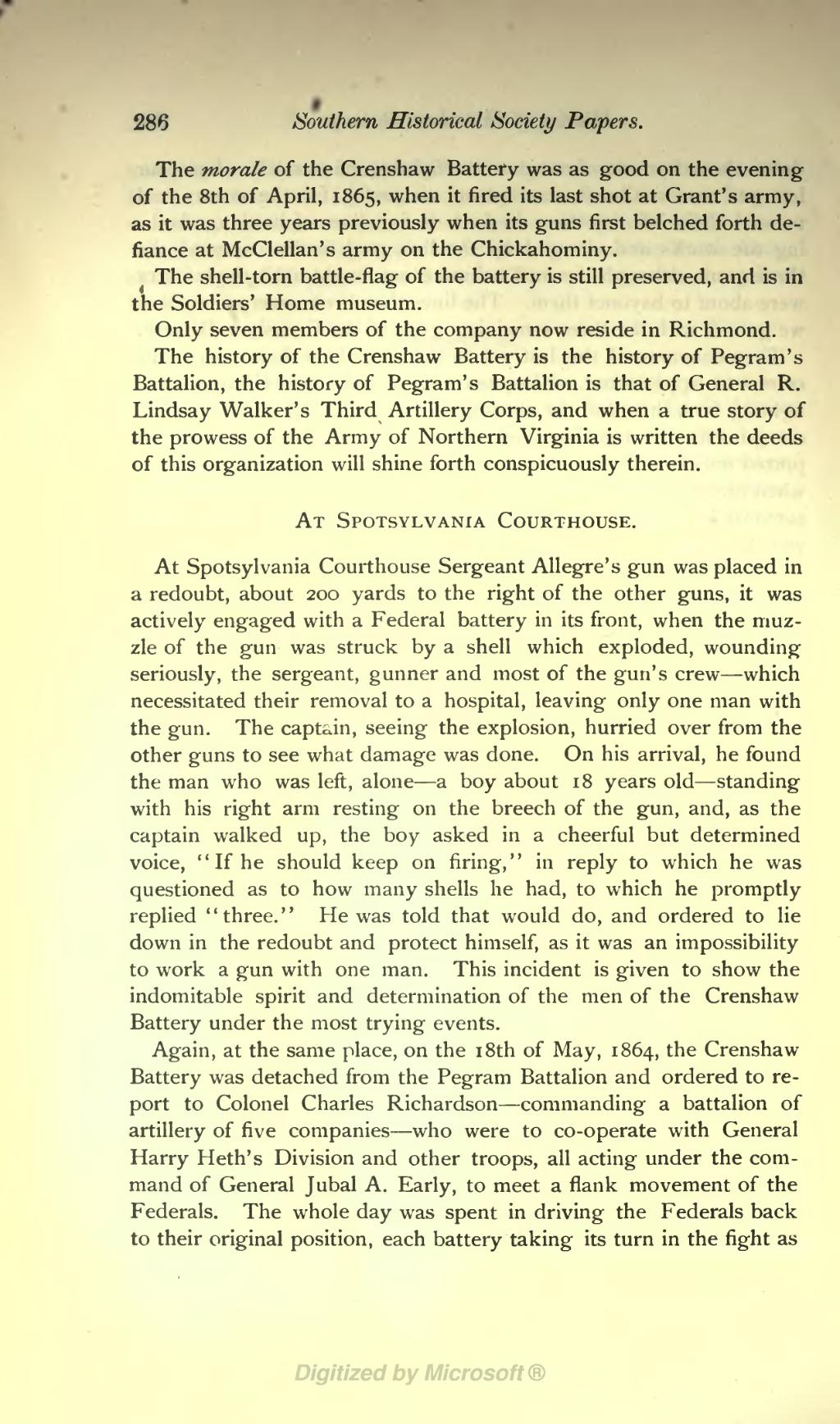286 Southern Historical Society Papers.
The morale of the Crenshaw Battery was as good on the evening of the 8th of April, 1865, when it fired its last shot at Grant's army, as it was three years previously when its guns first belched forth de- fiance at McClellan's army on the Chickahominy.
The shell-torn battle-flag of the battery is still preserved, and is in the Soldiers' Home museum.
Only seven members of the company now reside in Richmond.
The history of the Crenshaw Battery is the history of Pegram's Battalion, the history of Pegram's Battalion is that of General R. Lindsay Walker's Third Artillery Corps, and when a true story of the prowess of the Army of Northern Virginia is written the deeds of this organization will shine forth conspicuously therein.
AT SPOTSYLVANIA COURTHOUSE.
At Spotsylvania Courthouse Sergeant Allegre's gun was placed in a redoubt, about 200 yards to the right of the other guns, it was actively engaged with a Federal battery in its front, when the muz- zle of the gun was struck by a shell which exploded, wounding seriously, the sergeant, gunner and most of the gun's crew which necessitated their removal to a hospital, leaving only one man with the gun. The captain, seeing the explosion, hurried over from the other guns to see what damage was done. On his arrival, he found the man who was left, alone a boy about 18 years old standing with his right arm resting on the breech of the gun, and, as the captain walked up, the boy asked in a cheerful but determined voice, "If he should keep on firing," in reply to which he was questioned as to how many shells he had, to which he promptly replied "three." He was told that would do, and ordered to lie down in the redoubt and protect himself, as it was an impossibility to work a gun with one man. This incident is given to show the indomitable spirit and determination of the men of the Crenshaw Battery under the most trying events.
Again, at the same place, on the i8th of May, 1864, the Crenshaw Battery was detached from the Pegram Battalion and ordered to re- port to Colonel Charles Richardson commanding a battalion of artillery of five companies who were to co-operate with General Harry Heth's Division and other troops, all acting under the com- mand of General Jubal A. Early, to meet a flank movement of the Federals. The whole day was spent in driving the Federals back to their original position, each battery taking its turn in the fight as
